To facilitate data exchange with suppliers, you may find it necessary to extract certain ENOVIA V5 VPM data from within an existing set of data for the purposes of subsequent modification by an external source. The extracted data must first be converted into an EPE (Engineering Package Exchange) i.e. a form of data that can be used by the recipient.
If you were to attempt to extract data without the appropriate steps described below the data would include a certain number of intermediate Parts that would be loaded into CATIA as components. Such Parts would prevent any concurrent engineering at the suppliers. These components must therefore be converted into CATProducts before being extracted.
To enable reconciliation, the data received by the supplier must be a complete assembly structure i.e. a non-filtered, non-configured Product and the root must be a PRC (Product Root Class). Using the method described below, you can create a persistent exchange PRC containing only that part of the data required for the exchange. Note that in order to keep data to a manageable size for reconciliation purposes you can create two or more PRCs: for example one, intended for designers, containing data in read/write mode and another, to provide the context, containing data in read mode only.
-
In VPM Navigator, open the data to be sent to your supplier:
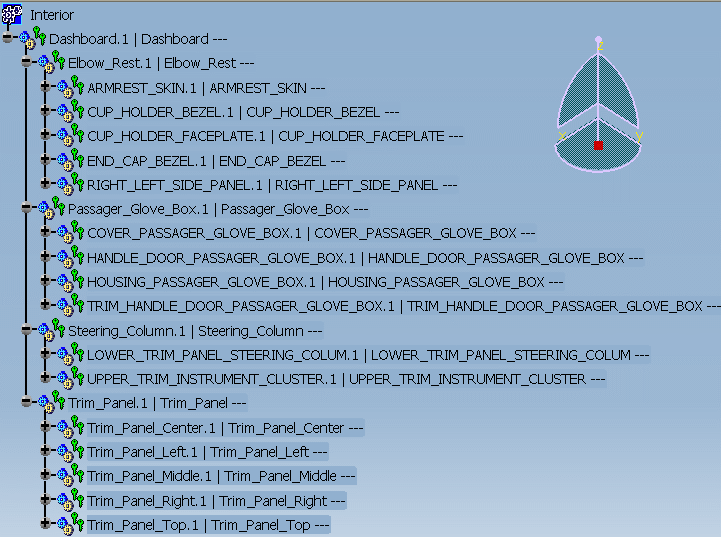
-
Right-click the desired Product tree root or branch (Interior in the example shown below) and select the Expand All
 command.
command. -
With the same object selected, click the Select Under...
 command in the VPM Navigator toolbar or right-click to select
the same command in the contextual menu. Bear in mind that the
Select Under command is only applied to the data that is visible in
the Product tree which is why you have to expand all data under the
selected Product in the previous step.
command in the VPM Navigator toolbar or right-click to select
the same command in the contextual menu. Bear in mind that the
Select Under command is only applied to the data that is visible in
the Product tree which is why you have to expand all data under the
selected Product in the previous step.
The Select Under dialog box appears. -
Click the Objects selection button and select Part Instance from the proposed list.
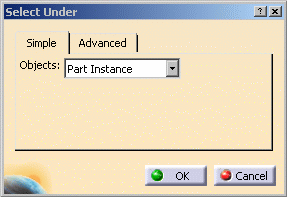
-
Click OK.
All the Part instances under the selected root or branch are now selected. -
Make sure that no ENOVIA V5 VPM data has already been loaded into the current CATIA session then
with the Part instances still selected:
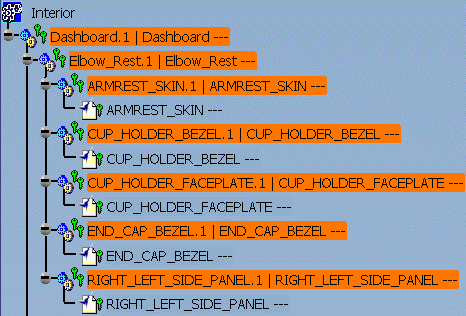
right-click and, in the contextual menu, select the Open... command.
The Open Modes dialog box appears.
-
Select the SRM extraction (open components as Products) box:
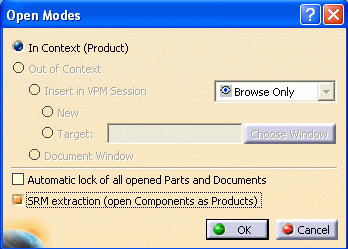
All selected objects are opened in CATIA:
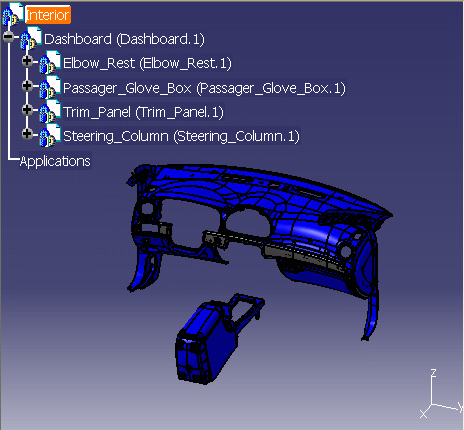
-
In CATIA, select the File->Save Management... command to check to see if all the selected Part instances have been converted into CATProducts:
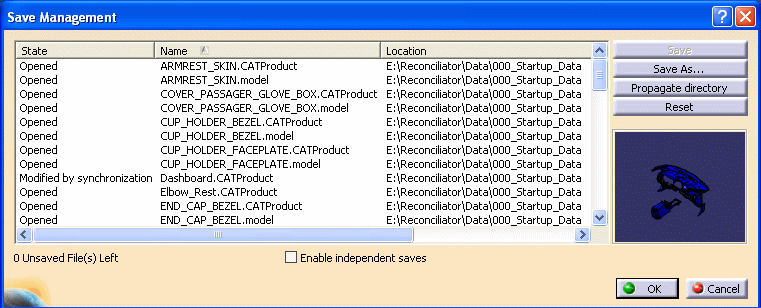
- Any objects in Structure Exposed mode whatever their reusable status in ENOVIA V5 VPM can be converted using this method.
- The attribute status of Parts converted in this way is not changed, for example the Controlled By and Assembly Type attribute values remain unchanged.
- Performance may be affected by the loading of a large number of Products.
![]()